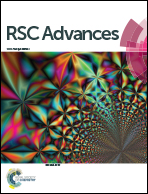Codelivery of doxorubicin and p53 by biodegradable micellar carriers based on chitosan derivatives
Abstract
In this work, novel biodegradable cationic micelles were prepared based on poly-(N-ε-carbobenzyloxy-L-lysine) (PZLL) and chitosan (CS) by click reaction, and applied for co-delivery of doxorubicin (DOX) and p53 plasmid. The structure of the copolymer was characterized by 1H NMR and FTIR. The loading amount of DOX in the micelles was 12.8%. Fluorescence spectra confirmed that DOX interacted via π–π stacking with micelles when DOX was encapsulated into the micelles. In particular, its complexation with plasmid DNA was investigated using agarose gel electrophoresis, flow cytometry, zeta potential, and particle size analyses as well as transmission electron microscopy observations. The results showed that the copolymers have a strong pDNA condensation ability and provide protection of pDNA against deoxyribonuclease I degradation. CS-g-PZLL/DOX/p53 nanoparticles showed good gene transfection efficiency in vitro. Fluorescence images and flow cytometry tests revealed that p53 and DOX could be efficiently transported into Hela tumor cells simultaneously, and the optimum N/P ratio for p53 transfection was 20/1. For co-delivery analysis, the obtained CS-g-PZLL/DOX/p53 complexes showed a better inhibitory effect on Hela tumor cells than DOX or p53 used singly.


 Please wait while we load your content...
Please wait while we load your content...